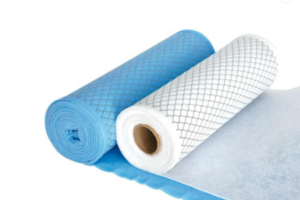Synthetic fiber pocket filter media is a high-efficiency, multi-purpose air filter material designed for industrial and commercial ventilation systems. It achieves high dust holding capacity, low airflow resistance and long-life filtration performance through the combination of a unique pocket structure and synthetic fiber materials. It is widely used in HVAC systems, clean rooms, manufacturing workshops and other scenarios, and is an ideal choice for balancing filtration efficiency and energy consumption costs.
Core structure and material properties
Material composition
Fiber type: Polyester (PET), polypropylene (PP) or mixed synthetic fibers are used, which have the characteristics of tensile resistance, moisture resistance and chemical corrosion resistance.
Surface treatment: Some models are treated with anti-static, hydrophobic or flame-retardant coatings to meet special environmental requirements (such as electronic workshops and high humidity areas).
Bag structure design
Multi-layer folding: Multiple independent filter bags are arranged in parallel and fixed by hot melting or sewing processes. After unfolding, they form wavy or V-shaped folds, and the effective filtration area can reach 2-5 times that of traditional flat filter materials.
Gradient density: The fiber density increases from the outside to the inside, gradually intercepting large particles to fine particles (such as PM10, PM2.5), reducing deep clogging.
Core advantages
High dust holding capacity and long life
The multi-layer fiber network of the bag structure can absorb a large amount of dust without significantly increasing the pressure difference. The dust holding capacity is more than 50% higher than that of the plate filter element, which is suitable for high dust load environments (such as woodworking workshops and foundries).
The typical service life is 6-12 months (depending on the working conditions), reducing the cost of frequent replacement.
Low pressure drop and energy saving
Open fiber distribution and aerodynamic design, the initial pressure difference is as low as 30-80Pa, reducing fan energy consumption, and meeting LEED or ISO 50001 energy efficiency standards.
Wide environmental adaptability
Temperature range: -40℃ to 120℃ (depending on fiber type), suitable for high temperature drying lines or ventilation systems in cold areas.
Chemical resistance: Resistant to weak acid, alkali and oil mist erosion, suitable for harsh scenes such as chemical industry and spraying.

Flexible installation and maintenance
The modular bag unit supports horizontal or vertical installation and is suitable for filter frames of different sizes.
The surface can be cleaned (only for certain models), and the performance can be partially restored by compressed air backwashing or water washing to extend the service life.
Typical application areas
Commercial buildings: Central air conditioning systems in shopping malls, hospitals, and office buildings to intercept pollen, dust and microorganisms.
Industrial manufacturing:
Automotive paint shops: Pre-filter paint mist and large particles to protect precision filters.
Food processing plants: Meet FDA standards to intercept dust and fibers to ensure production hygiene.
Electronics and pharmaceuticals: Clean room primary filtration to control particles above 0.5μm and maintain ISO Class 8-7 cleanliness levels.
Energy industry: Gas turbine intake filtration to prevent dust and salt spray from eroding blades.
Selection and maintenance guide
Selection parameters
Filtration efficiency: Select according to the MERV rating (usually MERV 8-13) or EN 779 standard to match the target particle size (such as PM10 or PM2.5).
Air volume adaptation: Calculate the number of filter bags (6-36 bags) and depth (300-600mm) based on the system air volume (m³/h) to avoid efficiency loss caused by over-speed operation.
Maintenance optimization
Pressure difference monitoring: Install a pressure difference gauge. When the pressure difference reaches 2-2.5 times the initial value (usually 150-300Pa), it needs to be replaced or cleaned.
Cleaning method: Compressed air reverse purge (pressure ≤ 0.5MPa) is recommended for non-water-washing models, and water-washing models need to be thoroughly dried before reuse.
Replacement strategy: It is recommended to use a pre-primary filter (such as G4 grade) in a high-dust environment to extend the life of the main filter bag by 30%-50%.
Synthetic fiber bag filter media has become a core component of modern air filtration systems with its structural innovation and balanced performance, helping enterprises achieve multiple goals of efficient dust removal, energy saving and consumption reduction, and sustainable operation.





